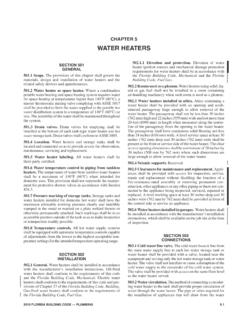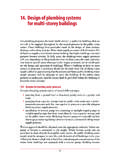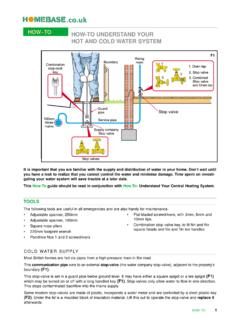Transcription of Map Resource Guide for Teachers New York City’s Water ...
1 Map Resource Guide for Teachers New york city s Water Story: From Mountain Top to TapWhat does this map tell us? New york city s Water Story: From Mountain Top to Tap (see addendum) has been created to help young people explore the New york city Water supply system and how the Water cycle affects their everyday lives. Maps are also tools for finding our way. Students can locate places and natural and human-made features within the watersheds and New york city that relate to their study of Water ; they can examine and compare different features by exploring their physical and cultural characteristics and how they function in our interdependent world. The map can complement multi-disciplinary lessons.
2 It can foster an understanding of the geography of the region during past times and how today it has played important roles in the life cycle of people, their ideas, and living environments. Graphic symbols, place names, lines, shapes, colors, patterns, elevations, and scale are just some of the valuable map-reading skills that can be developed while students are engaged in cooperative learning activities. Background Encompassing almost 2,000 square miles, the New york city Water supply system consists of the Croton, Catskill, and Delaware Watersheds. Within these three watersheds, rain and snow are captured and stored in 19 reservoirs and three controlled lakes, with a capacity to hold approximately 580 billion gallons of fresh Water .
3 One billion gallons of Water is delivered each day to 9 million people completely by gravity. Objectives To help students understand where their Water comes from and the implications of building, operating, and maintaining a Water supply system . To learn about watersheds as a living, working, natural landscape. To identify the natural and constructed features of the New york city Water supply system . To encourage discussion about many relevant topics, including geography, topography, climate change, land use, engineering, scale, economics, Water quality, eminent domain, watershed protection, forestry, technology, conservation, stewardship, and careers. Suggested Activities 1) Use New york city s Water Story: From Mountain Top to Tap to explore the New york city Water supply system .
4 Ask your students: If a raindrop fell within a watershed, how would it get to consumers? What path could Water take if it were to spill over a dam instead of going through an aqueduct? 2) Map scavenger hunt: Identify the largest and smallest reservoir, the highest and lowest reservoir elevations, the legend, compass, etc. 3) Using the map s photographs and captions, create a storyline for Water travelling from a reservoir to NYC. 4) Design your own map that features your environment. 5) Create a folktale about the Water system and its history. 6) Create a reservoir timeline. 7) Research the history of the Water supply system , its impact on local communities, agricultural and recreational activities, watershed protection, and other topics.
5 8) Research the Watershed Memorandum of Agreement (1997) and the Filtration Avoidance Determination (2007). 9) Use the Watershed Activity to familiarize students with watersheds. 10) Discuss this quote from naturalist and Catskill Mountain resident, John Burroughs: To find the universal elements enough; to find the air and the Water exhilarating; to be refreshed by a morning walk or an evening saunter .. to be thrilled by the stars at night; to be elated over a bird's nest or a wildflower in spring - these are some of the rewards of the simple life. 11) Introduce vocabulary in the Glossary. 12) This map can spark conversation about many other themes. Follow-up lessons can cover topics such as: a.
6 Stream ecology b. Forest management c. History of the Water supply d. Drinking Water quality e. Wastewater treatment f. Harbor Water Quality g. Water Conservation h. Careers 13) Introduce and discuss some of the essential questions listed below. 14) Compare the 1938 Water supply of New york city map with the new Water Story map. (See addendum) Essential Questions History/Social Studies: Before looking at this map, where did you think your Water came from? How does this map shift the way you view your environment? How is Water a part of New york city history? How has the history of our Water supply system shaped our traditions and ideas about Water as a society?
7 What is the historical timeline of the NYC Water supply system ? Where else might NYC have gone to get Water ? What challenges would this alternative have presented? Why do you think NYC had to look for Water outside of the city ? What is eminent domain? Who are some of the key figures in the creation of NYC s Water supply system ? What other primary and secondary sources could we use to learn more from this map? What is the value of maps? Water Cycle Why is Water important? How do you use Water ? How much of our Earth is covered in Water ? How much is fresh Water ? How is Water recycled by natural processes on Earth? What other organisms and ecosystems depend upon the Water cycle?
8 How do the properties of Water affect living things and the natural environment? How does seasonal change affect temperature and weather conditions over time? How can you describe the properties of Water ? Why are there different climates on Earth and how can climate be altered? Watersheds What is a watershed? How does land-use differ across the watersheds? How do air, Water , and land interact? How do plants and animals interact? How do people interact within the watersheds? How are plants, animals, and Water in an ecosystem connected? What organisms thrive in Croton, Catskill and Delaware Watersheds? How does this compare to the organisms found thriving in New york city ?
9 What are the processes that help shape the land? How do plants, animals, and people respond to environmental changes? Water supply How were communities impacted by the building of reservoirs? How do we gather data about our Water supply system ? How do natural events impact our Water supply ? What force allows Water to travel naturally from watersheds to NYC? What are dams and how are they constructed? What are spillways and how do they connect to natural systems? How do plants, animals, and landforms differ within the watersheds and New york city ? How do living and nonliving things interact in this system ? What investigations do scientists perform?
10 How do scientists gather, use, and share Water quality information? What role does the government play in regulating Water ? How is New york city Water regulated? How is bottled Water regulated? How has technology changed the way Water systems are designed, constructed, operate, and are maintained? What are some current local, national and global Water supply issues? Drinking Water Quality How do forests influence Water quality? What is the value of trees (and how do their many parts function)? Which forms of energy affect our Water supply system (heat, electric, sound, chemical, mechanical, light)? How do the properties of Water affect living things and the natural environment?














